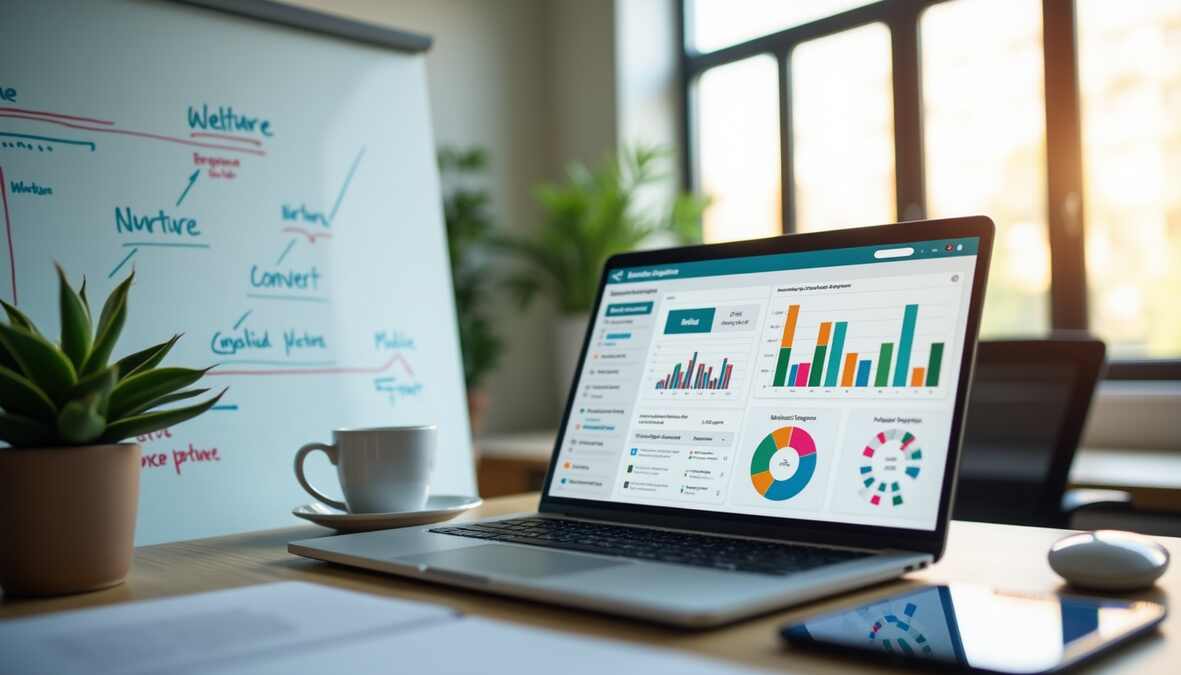Email Campaign: Email campaign marketing delivers an incredible 3,600% return on investment. This makes it one of the most powerful tools marketers can use today. Email might be one of the oldest digital marketing channels, but its growth keeps accelerating. The global value of email marketing hit $8.3 billion in 2023. Experts project this number will jump to $18.9 billion by 2028.
The numbers reveal why email stays so effective. Most marketers (58%) want to increase revenue through their email campaigns. Web traffic generation matters to 45.2% of them, while 43.9% want to boost brand awareness. The future looks even brighter. Daily email users will grow by 500 million by 2027, creating more chances to reach potential customers.
Success rates tell an interesting story. Open rates usually fall between 15% and 25% in different industries. The right timing, relevant content, and clear calls to action make email marketing work. We’ve collected proven approaches, tools, and templates that will help your 2025 campaigns succeed. This piece shows you what works right now – from welcome emails that create loyal customers to image-rich messages that can boost your open rates by almost 10%.
Understanding What an Email Campaign Is
Email campaigns form the life-blood of successful digital marketing. Let’s dive into what these campaigns are and how they work as part of your marketing strategy.
What is an email campaign?
An email campaign is a series of coordinated emails sent over time with one main goal. Unlike random emails, these campaigns guide recipients toward specific actions. Your audience might download resources, sign up for webinars, or buy products.
Every successful email campaign needs three key parts: an eye-catching subject line, valuable content, and a clear call to action that supports your campaign’s goal. Most marketers suggest using one main CTA in each email, though adding a secondary option can help.
Email campaigns take many forms to meet different goals:
- Welcome series: Shows new subscribers what your brand stands for and what they can expect
- Promotional emails: Shares special offers, discounts, or time-sensitive deals
- Reengagement campaigns: Brings back subscribers who haven’t opened your emails
- Abandoned cart reminders: Helps shoppers finish purchases they started
- Newsletters: Shares company updates and useful content
You can send one-time campaigns for quick results or create a series of messages over time. Your overall message should stay consistent, even when individual CTAs change between emails.
Breaking down your audience into segments gets the best results. Each group gets content that speaks to their interests and needs. This customization can lead to up to 6x higher transaction rates compared to generic messages.
How email marketing fits into your overall strategy
Email marketing isn’t just another tool – it’s vital to your digital strategy. It stands as one of the strongest parts of digital marketing. Americans check their personal email more than ten times each day. This makes email perfect for staying connected with your audience.
Email campaigns work best when they team up with other marketing channels to boost brand awareness, build customer relationships, and stimulate business growth. Your emails can point readers to your blog for more details, while your social posts can bring followers to your email list for special updates.
Email campaigns shine in several ways:
- Direct, focused communication: Your email content stands alone, away from social media and search engine distractions
- Cost-effectiveness: Email marketing gives you more bang for your buck than other marketing channels
- Precise targeting: Email helps you reach specific groups based on who they are, what they do, and what they like
- Measurable results: Email platforms show you exactly how well your campaigns work
Email marketing excels at bringing in new customers through simple engagement, keeping current clients interested between purchases, teaching people about what you offer, and keeping your brand top of mind.
New marketing channels pop up all the time, but email stays strong because most people have and regularly check their email accounts, especially on phones. This explains why email marketing beats all other online marketing strategies, including SEO, PPC, and content marketing in ROI.
Your email campaigns work better when they merge with your content marketing, social media, SEO, and paid ads. This approach keeps your message consistent everywhere your audience finds you, making your brand stronger and getting more people involved.
Planning Your Email Campaign the Right Way
Email campaign marketing success starts with careful planning before you click “send.” You need a clear roadmap that guides your email initiatives toward measurable results. Let’s look at three pillars of email campaign planning that can boost your performance.
Define your campaign goals
Creating email content requires specific objectives that match your business goals. Research shows 77% of email marketing ROI comes from segmented, targeted, and triggered campaigns. Your goals need structure and clarity to employ this potential.
The SMART framework provides an excellent way to set goals:
- Specific: Define exactly what success looks like for your team
- Measurable: Determine concrete metrics to track progress
- Achievable: Set realistic targets based on your team’s capabilities
- Relevant: Make sure goals match your company’s values and bigger picture
- Time-bound: Set clear deadlines for completion
Email marketing objectives fall into several categories. These include informing readers about products, attracting users to your company, getting audience participation, directing users to your website, nurturing potential customers, and turning subscribers into loyal customers.
Your team needs firm deadlines to work against. This helps them see current progress against the time left to achieve success.
Segment your audience for better targeting
Audience segmentation splits your email list into smaller, targeted groups to deliver relevant content. Yes, it is all about providing personalized messages to your recipients.
These approaches work well for segmentation:
- Demographics: Group subscribers by age, gender, income, and family status
- Geographic location: Segment by country, city, zip code, or time zone
- Behavioral data: Categorize based on website interactions, purchase history, and email engagement
- Customer personas: Match messaging with identified buyer profiles
- Stage in sales funnel: Tailor content for leads at top, middle, or bottom of funnel
- Organization type: For B2B marketers, segment by industry, business size, or company type
Huda Beauty improved their performance by changing their content strategy to focus on their most engaged subscribers. They learned that engaged profiles (those who opened at least one email in recent months) were their main list’s most valuable segment.
Segmentation offers two main benefits: Your message reaches the right people and stays out of the wrong people’s inboxes.
Choose the right email campaign type
Your objectives and audience needs determine the best email campaign type. Each type plays a distinct role in your overall strategy.
Welcome emails create vital first impressions. They introduce new subscribers to your brand, set expectations, and boost engagement. These messages often get higher open rates than standard campaign emails.
Promotional campaigns showcase specific products, services, or special offers. They include clear calls-to-action to drive sales or conversions quickly.
Re-engagement campaigns help you reconnect with inactive subscribers through special offers, personalized content, or incentives. These messages can recover lost customers and revenue.
Transactional emails respond to specific user actions like purchases or sign-ups. They provide essential information such as order confirmations and account updates. These messages get higher click-through rates because customers actively seek this information.
A careful audience analysis helps you pick the right campaign type. Lead nurturing emails, to name just one example, drive conversions by providing relevant content to leads at various stages of their experience.
The right campaign type depends on your audience’s position and their next needs. Matching your campaign type to specific goals and audience segments creates strong foundations for email marketing success.
Creating High-Impact Marketing Emails
Your email campaign’s success depends on the quality of each message you send. Every element should work together to grab attention, add value, and drive action. Let’s get into three key components that turn regular emails into powerful marketing tools.
Crafting subject lines that get opened
The subject line acts as a gateway to your email content—making it more crucial than the body copy itself. Research shows that 47% of recipients open emails based solely on the subject line. However, 69% report emails as spam based on subject line alone. This tiny text decides if your message reaches readers or ends up in the spam folder.
Great subject lines have common traits: they’re brief, clear, and highlight value. Here are some proven styles that work:
- Personal: Adding the recipient’s name boosts open rates, yet 31% of brands currently use personalized subject lines
- Urgent: Build immediacy with “Last Chance” or “24 Hours Left”
- Curiosity-driven: Ask an interesting question or tease valuable content inside
- Benefit-focused: Tell readers what they’ll gain by opening
Note that your subject line should match your email content, as 30.4% of subscribers will unsubscribe when they see misalignment. The right format matters too. Skip ALL CAPS and multiple exclamation points—they trigger spam filters and hurt deliverability.
Writing clear and compelling email copy
After your subject line succeeds, your copy must deliver what you promised. Good email copy has four main parts: subject line, preview text, email body, and call-to-action.
Preview text gives you another shot at convincing subscribers to read on by adding context to your subject line. The body content needs proper structure—stick to short paragraphs (2-4 sentences), focus on one main idea per paragraph, and use headers and white space to make scanning easier.
Length plays a big role. The sweet spot for emails is 50-125 words, which busy readers can digest quickly. Each word should count in your message. Write like you’re talking to someone face-to-face. This helps build trust with your audience.
Your call-to-action (CTA) could make or break your email. Keep CTAs short with action words, and try first-person phrasing (“Start My Free Trial” beats “Start Your Free Trial”). Focus each email on one goal—multiple objectives will weaken your message.
Designing mobile-friendly layouts
Recent stats show that 42% of all emails are now read on mobile devices. Mobile-friendly design isn’t optional anymore. Email design practices now take a mobile-first approach.
Here’s how to create responsive emails:
- Simplify your layout: Single-column designs shine on mobile screens
- Optimize text size: Body text needs 14px minimum and headings should be 22-28px
- Choose readable fonts: Clean, sans-serif fonts like Arial, Verdana, or Helvetica work best
- Incorporate whitespace: Clear section breaks prevent cluttered looks
Mobile devices show only 33-43 characters of subject lines. With limited preview space, put key information first.
Responsive design helps emails adjust to different screen sizes. A desktop image beside text will move above it on mobile. Testing these templates across devices and email clients will ensure they look good everywhere.
Many email platforms now offer mobile-responsive templates that save time and look great on all devices. You can customize these templates to match your brand while giving readers an exceptional experience.
Using Tools and Templates to Save Time
The right combination of tools and templates will help you run your email campaigns better. Your original choice of resources can save hours of work and boost campaign performance. This lets you spend more time on strategy and content instead of technical details.
Top email marketing tools in 2025
The email marketing world keeps changing faster as platforms add more sophisticated features. These capabilities are crucial when you pick your tools:
- Ease of use: User-friendly interfaces with drag-and-drop builders
- Automation capabilities: Workflow setup for onboarding and nurturing
- Segmentation options: Targeting based on behavior and demographics
- Analytics: Detailed tracking for optimization
- Deliverability: Features ensuring emails reach inboxes
Klaviyo stands out for e-commerce with excellent segmentation and conditional splits that work great for Shopify store owners. HubSpot gives you complete B2B solutions from $45 per month with tools beyond just email.
ActiveCampaign offers flexible solutions with 850+ app integrations like Facebook, Shopify, and WordPress. Freelancers love ConvertKit for its creator-focused features and plans from just $9 monthly.
Large organizations often choose Litmus, which costs more ($79+ monthly) but delivers powerful enterprise features. Startups tend to pick Iterable (from $99/month) for its strong automation and segmentation.
Free email marketing services worth trying
You might want to start small. Several platforms give you generous free plans. MailerLite has a “Free Forever” plan with most features ready to use. Beginners find it perfect to start their email marketing journey. The platform’s simple interface packs useful features like landing pages, forms, and marketing automation.
Sender gives you an impressive free allowance—2,500 subscribers and 15,000 emails monthly. You also get nine pre-built automation workflows for customer win-back, webinar promotion, and abandoned cart recovery.
Brevo (formerly Sendinblue) includes automation in their free plan. HubSpot combines email marketing with CRM features and lets you send up to 2,000 emails monthly to 1,000 contacts free.
E-commerce businesses benefit from Omnisend‘s free plan. It has full email automation with 20+ pre-built e-commerce flows, customer segmentation, and A/B testing.
Editable templates for different campaign types
Good templates save design time while keeping your campaigns professional. Klaviyo gives you hundreds of customizable templates for welcome series, birthday promotions, and newsletters. Their content editor helps you work faster with reusable blocks and saved content. Updates apply across all templates at once.
Stripo’s platform has responsive email templates sorted by campaign type. You can create multiple product cards or email digests quickly with smart elements. They also provide an email banner generator and modular architecture to reuse across campaigns.
HubSpot organizes template collections by purpose. You get 10 templates for various situations, 15 holiday-themed designs, and 30 follow-up email templates. ActiveCampaign offers more than 350 free, mobile-optimized email templates for industries from retail to technology.
Modern platforms now use dynamic content to show or hide blocks based on profile conditions. This helps you avoid duplicate templates and customize messages for specific customer groups. Your tech stack integration lets you personalize templates with product feeds that match your subscribers’ interests.
Sending and Automating Your Campaign
Timing and execution can make or break your email campaign marketing performance. Your results will dramatically improve when you optimize delivery and automate processes, while saving precious time and resources.
Best times and days to send emails
The right timing plays a significant role in email marketing success. Research shows Tuesday tops the list as the best weekday for campaign sends, with open rates edging higher than other days. Emails sent early morning at 7 AM and mid-morning at 11 AM EST tend to get better engagement.
Smart marketers avoid sending at “round” times like the hour mark or quarter-past intervals. The quickest way to dodge ISP traffic jams is to schedule sends at odd times – 10:55 AM or 7, 21, or 36 minutes past the hour.
Global audiences need a different approach. You can either segment by time zone or use a “follow the sun” strategy. The second method ensures messages land at sunrise in each recipient’s time zone, which maximizes visibility in their inbox.
How to use automation for better results
Email automation runs on preset rules that send messages based on your customer’s actions or lack thereof. This approach eliminates manual tasks and delivers perfectly timed, tailored content.
Here’s what triggers effective automation:
- New subscriber sign-ups (welcome emails get 4x higher read rates than regular marketing emails)
- Abandoned shopping carts (helps recover lost sales)
- Product browsing without purchase
- Post-purchase follow-ups and review requests
Automation shines when it comes to creating tailored experiences. Research shows 90% of consumers respond well to personalized content, and automated emails hit the mark with perfect timing.
Avoiding spam filters and compliance issues
The CAN-SPAM Act governs all commercial emails and violators face fines up to $53,088 per incident. Stay compliant by following these rules:
- Keep header information and “From” addresses accurate
- Write honest subject lines that match email content
- Label your message as an advertisement
- List your physical address
- Give clear opt-out options
- Process opt-out requests within 10 business days
Your sender reputation matters most. Purchased email lists typically see 5x lower open rates and attract 4x more spam complaints. Keep your sending clean by maintaining proper image-to-text ratios, steering clear of spam trigger words, and regularly removing inactive subscribers from your list.
Measuring and Improving Campaign Performance
Email campaign performance analysis gives significant insights that lead to future success. Understanding key metrics helps you spot what works and areas that need improvement in your email marketing strategy.
Key metrics to track (open rate, CTR, etc.)
The most important email performance indicators include:
- Open rate: Measures percentage of recipients who opened your email, typically averaging 19.66% globally
- Click-through rate (CTR): Shows percentage of delivered emails that were clicked, with industry average around 2.02%
- Conversion rate: Tracks percentage of recipients who completed desired actions after clicking
- Bounce rate: Represents percentage of emails that weren’t delivered
- Unsubscribe rate: Shows how many recipients opted out, ideally below 2%
Your list growth rate and overall ROI connect your efforts directly to business outcomes.
Using A/B testing to optimize results
A/B testing lets you send different email versions to see what appeals best to your audience. You test one variable while keeping other elements the same.
Common elements to test include:
- Subject lines (can improve open rates by 14% when personalized)
- Email content and layout
- CTA buttons and placement
- Sending times and frequency
The success metric should match the variable you’re testing. Subject line tests focus on open rates, content changes look at click rates, and overall campaign success tracks conversion rates.
What to do after the campaign ends
Post-campaign analysis helps you improve continuously. Set up a tracking schedule that works best—weekly, monthly, or by campaign.
You should:
- Compare results against measures and previous performance
- Identify patterns of improvement or decline
- Analyze which content generated the most participation
- Document learnings and share findings with stakeholders
These analytical insights shape future campaigns and create an ongoing cycle of improvement. Your message refinements based on data will gradually improve results across all metrics.
Conclusion
Email campaign marketing produces outstanding results when businesses use smart strategies. This piece shows what works in 2025—from campaign planning with clear goals to content that strikes a chord with your audience. Without doubt, the numbers prove email marketing’s strength with its remarkable 3,600% ROI. The market should grow to $18.9 billion by 2028.
Email marketing success requires careful planning. Clear campaign goals, proper audience segmentation, and the right campaign type are the foundations of meaningful participation. Your emails should deliver value through compelling subject lines, clear copy, and designs that work on any device.
The right tools can transform your results. Platforms like Klaviyo, HubSpot, and ActiveCampaign streamline your workflow with powerful features. Free options like MailerLite are a great way to get started for businesses with tight budgets. Pre-built templates help save time while keeping your campaigns looking professional.
Perfect timing and measurement create winning campaigns. Tuesday mornings usually bring the best results, though your audience might prefer different times. Your campaign analysis should focus on open rates, click-through rates, and conversions. These metrics help you improve future campaigns.
Email marketing runs on direct connections with your audience. Other marketing channels may fade, but email stays strong by delivering individual-specific messages to people interested in your brand. The strategies in this piece will help you create campaigns that reach inboxes and drive real business results in 2025 and beyond.
FAQs
Q1. What are the key trends shaping email marketing in 2025? Hyper-personalization powered by AI, interactive email elements, and mobile-first design are some of the major trends. Marketers are focusing on creating highly tailored content, incorporating interactive features like polls and quizzes, and optimizing emails for mobile devices to boost engagement.
Q2. How can businesses improve their email open rates? To improve open rates, craft compelling subject lines, personalize content based on subscriber data, optimize send times using AI-powered tools, and regularly clean your email list to remove inactive subscribers. Additionally, using a recognizable sender name and avoiding spam trigger words can help emails reach the inbox.
Q3. What strategies can increase email click-through rates? To boost click-through rates, focus on creating clear and concise content, use strong and visible calls-to-action (CTAs), segment your audience for targeted messaging, and incorporate visually appealing elements like images or videos. A/B testing different email components can also help identify what resonates best with your audience.
Q4. How important is mobile optimization for email campaigns? Mobile optimization is crucial, as over 70% of people check emails on their phones. Ensure your emails have a responsive design, use a single-column layout for easy scrolling, incorporate large, tappable buttons, and keep the content concise and scannable for mobile users.
Q5. What role does automation play in effective email marketing? Automation plays a significant role in modern email marketing. It allows businesses to send timely, relevant emails based on specific triggers or user behaviors. This includes welcome sequences, abandoned cart reminders, post-purchase follow-ups, and re-engagement campaigns. Automation helps maintain consistent communication and nurture leads effectively without manual intervention.
Read more: SEO Services


![How to Write Sales Email Templates That Actually Get Responses [2025 Guide] Sales Email](https://cgty.xyz/wp-content/uploads/2025/05/Sales-Email-150x150.jpg)







